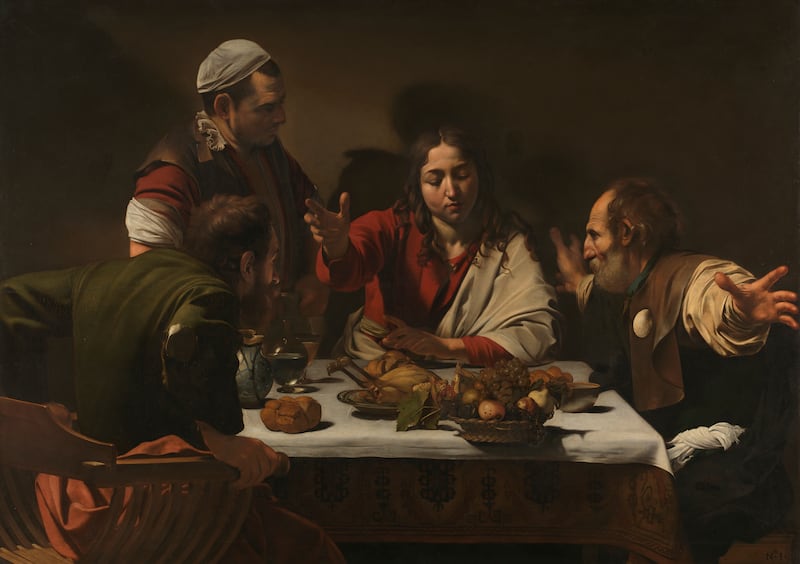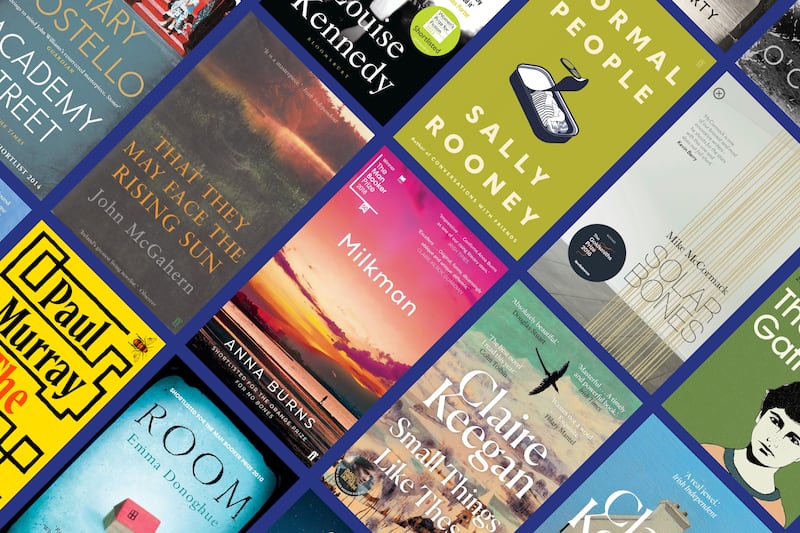Caravaggio is in Belfast. At the Ulster Museum, to be precise, where two of his masterpieces are on display as part of a unique collaboration with the UK’s National Gallery and the National Gallery of Ireland.
To celebrate its 200th birthday, the London gallery has loaned 12 of its most famous paintings – think Constable’s The Hay Wain and Monet’s Water-Lilies – to venues across the UK. Belfast got The Supper at Emmaus – and beside it, thanks to some cross-Border co-operation, The Taking of Christ, on loan from Dublin, two paintings that originally hung side by side in a palace in Rome but have rarely been reunited in 400 years.
Each of the paintings is exquisite, and to see them together feels special, like a brief blast of heat from an Italian holiday that, for a moment, makes you forget the drizzle falling outside.
It is the sort of magic I can’t quite get used to seeing in Belfast. This is Stranmillis Road, not the Uffizi; my memories of childhood visits to the Ulster Museum are of huge dinosaur skeletons, Takabuti the mummy and being evacuated because of a bomb scare.
‘Our daughter is almost 40 and moving out soon, but she has told her son that he can stay with us’
Irish Times readers pick Claire Keegan’s Small Things Like These as the best Irish book of the 21st century
‘I grew up in an apartment in another country. I bought an apartment in Dublin and had to get out after a year’

Today’s children will, I hope, remember the Caravaggios; with apologies to the master, the best part of the visit on the day I was there was the sheer number of primary pupils clustered around the paintings as school trip after school trip was introduced to world-class art. Maybe it was just me, but when their uniformed crocodiles emerged from the gallery I thought I saw wonder on their faces.
That is what art does, and why the arts matter. They show us the world in all its beauty and complexity; they teach us creativity, curiosity and empathy; they improve our mental health and wellbeing, and our quality of life. Stranmillis Road can be the Uffizi.
But this sort of event does not happen by magic. It requires the vision to come up with such ideas and the money to make them happen. As the artistic record of this island proves, there is no shortage of ideas; the problem is the finances, or the lack of them.
The budget for the Arts Council of Northern Ireland, the official funding and development organisation for the arts in the North, has fallen from £14.1 million in 2011-12 to £9.7 million in 2023-24, which with inflation represents a cut of about 40 per cent, it says. This works out as a budget of £5.07 per person per year in Northern Ireland, less than a quarter of the sum invested by the Government in the Republic, where the figure is £21.68 per person, according to the council.
Even within the UK, the Northern Ireland budget is almost half that in Wales, the point of nearest comparison, which invests £9.45 per person in the arts annually. (Different remits in England and Scotland mean it is not possible to make a valid comparison.)
The situation gets worse. There is no equivalent in the North of the Basic Income for the Arts pilot scheme, which has helped 2,000 artists in the State to the tune of €325 per week; instead, an Arts Council of Northern Ireland report into the working and living conditions of artists in the North, published last month, outlined a “troubling” picture.
Artists in Northern Ireland earn, on average, £11,200 a year from their work, and have faced an 11 per cent reduction in their overall income, in real terms, since 2010, compared to a 1 per cent increase in the wider economy. Of an estimated 14,500 artists in the North, only 29 per cent work full-time in the arts. More than half have or would consider relocating for better career prospects. That figure rises to two-thirds for 18 to 34-year-olds.
“Although our arts community is highly trained and educated, few work full-time and earning potential is severely limited,” says Karly Greene, director of strategic development and partnerships at the Arts Council of Northern Ireland. “Artists, the work they produce, the festivals they create, the music they compose, are at the very heart of life in Northern Ireland, enriching communities, driving tourism, boosting our night-time economy. This is a sector from which we ask an awful lot but to which we give very little.”
A big part of the argument being made here is the economic one. This is difficult to quantify, which may be why recent figures are hard to find, but it is stating the obvious to point out that the arts bring an economic benefit, not least in terms of tourism and job creation, that far outweighs that annual investment of less than £10 million.
Where would Northern Ireland’s tourist offering be without Seamus Heaney or Van Morrison, or Lisa McGee’s Derry Girls?
Yet this is not what funding for the arts is about. In an interview with the Mark Carruthers of the BBC a few weeks ago, Gary Lightbody, frontman of Snow Patrol, one of Northern Ireland’s artistic success stories, said the arts must be properly resourced not for “people like me, or people that are doing well” but for “people that aren’t and can’t possibly do it any other way than getting a little bit of funding”.
The arts, he said, were “a vital part of what makes us us”, yet there was an “underappreciation, to say the least”, from the Northern Ireland Executive towards them.
“Our government perhaps has a view that arts will just take care of itself,” he added.
The Arts Council of Northern Ireland’s chief executive, Roisín McDonough, has said: “The government money available here is simply not enough to meet our fundamental objective and one of the Northern Ireland Executive’s priorities – to ensure that everyone has access to the arts.”
Funding the arts is not about the success stories, though artists need a supportive environment if they are to become such. It is about ensuring that universality of access, making sure that, no matter what their background, every child can see a Caravaggio.
This is all the more important in a society still emerging from conflict. Time and again the arts have been at the forefront of efforts to understand and interpret what happened to the North and its people, and to help it move on. The arts have brought different communities together, given voice to the disadvantaged and marginalised, challenged sectarianism and brought about reconciliation even as our politics has failed to do so.
They have taken on other challenges, too, from climate change to mental-health issues and loneliness. Just look at some of the recent projects funded by the arts council and the UK National Lottery.
Colour Stories recently transformed derelict land in Belfast into a dye garden that used traditional knowledge about how to extract colour from plants as a starting point for bringing local people’s stories and identities to life through nature.
Kabosh, a theatre group that has done much to explore the legacy of conflict, has been running a multi-art form and gardening therapy project with residents of Belfast care homes to engage isolated older people in the arts.
And in May young people from Craic Arts Centre in Coalisland, Co Tyrone, performed their own theatre piece, Identity, at Stormont, the result of arts workshops exploring confidence, self-worth and wellbeing.
“It started in 1995 with a like-minded group of people who wanted to set up an alternative to the drink-and-drugs culture in the area,” Michael Carolyn from the centre told the arts council. “Our whole mission was to promote the arts – and that sounds a wee bit pompous, maybe, but it’s true: we do promote the arts ... especially to the young people in the area, and I can see the benefit of it.”
“I think access to the arts for young people is so important because it fosters so much creativity,” said Dylan Fox, a young performer. “I think being able to be given the arts at such a young age and foster that creativity, it just makes everywhere so much nicer.”
I still remember a primary-school trip to the Riverside Theatre in Coleraine. The play was James and the Giant Peach. I have never forgotten my amazement as I stared at the stage, unable to comprehend how a huge fruit could be made to hang from the ceiling. That’s wonder.
I did not become a playwright, nor an actor, and I did not make my career on the stage, but I still go to the theatre when I can and the arts has certainly influenced the work I do. Most of all, it has made my life better; for me it’s the difference between existing in 2D and experiencing a multicoloured, 3D world.
This is what the arts do, why Northern Ireland needs them, and why they deserve to be funded properly. The children inspired by the Caravaggios must have the chance to become the artists of the future.
National Treasures: Caravaggio in Belfast is at the Ulster Museum until Sunday, September 1st



















